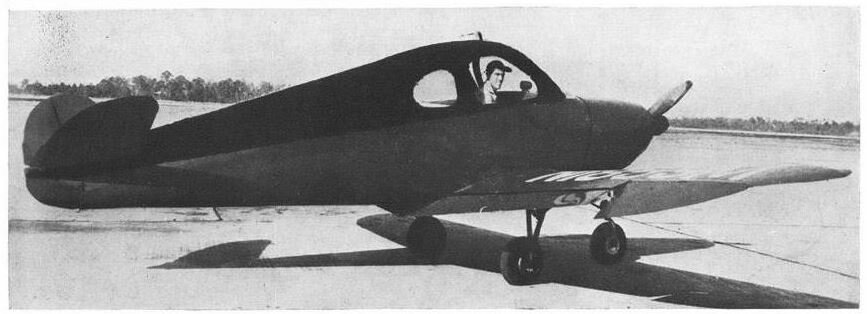- Joined
- 28 January 2008
- Messages
- 631
- Reaction score
- 479
Jamieson J-1 Jupiter
Charles M Jamieson was a former Beech and Culver engine who, in 1949, was located at Feland in Florida.
The Jupiter was a conversion of the Culver PQ-8 and was all-metal with a distinctive V-tail.
Production was geared for the 40-50 aeroplanes per month but in the end, only the prototype (registered as N1859M) and three other examples (registered N41781 / N61468 / N41778) were completed. The prototype flight tests were undertaken by Ross Holdeman who was also the firms sales director.
Aircraft construction was with aluminium alloy stressed skin throughout the fuselage and wing. The fuselage was constructed in three distinct parts for ease of assembly. The undercarriage was of the tricycle type and was fully retractable. The aircraft came with a simple wing-folding mechanism, which was hand operated and fitted as standard. The Jupiter's cabin had doors either side for access to the three seats. Later, the company also installed a 125 hp Lycoming O-290 engine to the airframe.
There was a derivitive of the Jupiter called the "J-2-L" but I can find no more details about it. Later, in the 1960's Jamieson also built three examples of the "Take-1" , also referred to as the "J".
Jupiter Characterstics:
Engine: 1x Lycoming O-235-C1 (115 hp)
Wing span: 29 ft 0 in
Length: 20 ft 10 in
Height: 6 ft 9 in
Payload: 800 lb
Baggage compartment capacity: 120 lb
Maximum speed: 167 mph
Cruise speed: 150 mph at sea level
Landing speed: 40 mph
Range: 700 miles
Rate of climb: 1,050 ft per min
Wheelbase: 6 ft 2 in
Seats: 3
Cabin doors: 43 in high x 36 in wide
Seat width: 48 in wide
Advertised cost: $2,500
Source:
Aviation Week -13 June 1949 issue
aerofiles.com - Jamieson entry
Charles M Jamieson was a former Beech and Culver engine who, in 1949, was located at Feland in Florida.
The Jupiter was a conversion of the Culver PQ-8 and was all-metal with a distinctive V-tail.
Production was geared for the 40-50 aeroplanes per month but in the end, only the prototype (registered as N1859M) and three other examples (registered N41781 / N61468 / N41778) were completed. The prototype flight tests were undertaken by Ross Holdeman who was also the firms sales director.
Aircraft construction was with aluminium alloy stressed skin throughout the fuselage and wing. The fuselage was constructed in three distinct parts for ease of assembly. The undercarriage was of the tricycle type and was fully retractable. The aircraft came with a simple wing-folding mechanism, which was hand operated and fitted as standard. The Jupiter's cabin had doors either side for access to the three seats. Later, the company also installed a 125 hp Lycoming O-290 engine to the airframe.
There was a derivitive of the Jupiter called the "J-2-L" but I can find no more details about it. Later, in the 1960's Jamieson also built three examples of the "Take-1" , also referred to as the "J".
Jupiter Characterstics:
Engine: 1x Lycoming O-235-C1 (115 hp)
Wing span: 29 ft 0 in
Length: 20 ft 10 in
Height: 6 ft 9 in
Payload: 800 lb
Baggage compartment capacity: 120 lb
Maximum speed: 167 mph
Cruise speed: 150 mph at sea level
Landing speed: 40 mph
Range: 700 miles
Rate of climb: 1,050 ft per min
Wheelbase: 6 ft 2 in
Seats: 3
Cabin doors: 43 in high x 36 in wide
Seat width: 48 in wide
Advertised cost: $2,500
Source:
Aviation Week -13 June 1949 issue
aerofiles.com - Jamieson entry

